The Grand Tour: The Arsenale in Venice, Italy
written by Ashley Eldridge-Ford
Needless to say, The Grand Tour 2007 (for me, sadly, only at this point encompassing Venice and Basel), was fantastic. Predominantly because it reinvigorated my perception of the contemporary art market. Having arrived within the first week, there was, of course, much to see and much to do. Having only two full days, I restricted my viewing to predominantly the main sections of the biennale - the Giardini and the Arsenale, both curated by the director, Robert Storr. If I had been lucky enough to have had a few more days there, I would dearly have liked to have explored the numerous other pavilions that are scattered throughout Venice. 'Think with the Senses - Feel with the Mind. Art in the Present Tense', showing in the Arsenale was an incredibly interesting, absorbing exhibition (if one can label such a wide variety under one collective).
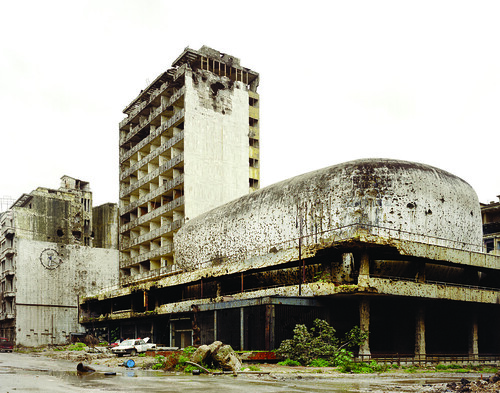
Gabriele Basilico
Beirut 1991
9 fotografie / 9 pictures
Pure pigmented print.
Courtesy dell’artista e Studio Guenzani, Milano
The first installation of artwork to fully catch my attention was that of Gabriele Basilico whose series of photographs, 'Beirut' (2007) reminded me almost instantly of the work of the Australian photographer, Simryn Gill. What calls to mind this comparison is the sense of beauty in decay and destruction. Basilico's photographs contain shots of buildings pockmarked with bullets or buildings that looks as though they have exploded internally. One has the distinct impression that the buildings and the streets were once very beautiful. What is poignant and sad is that one remembers how this city has already built itself up from the ruins of war once before and how it has once again been reduced to squalor and rubble. As with Gill's work, the ugly offensive (such as bullet holes peppering exterior walls) becomes inherently beautiful due to a stillness, an absence (of humankind) and a subsequent timelessness enhanced by the immortality of these buildings.
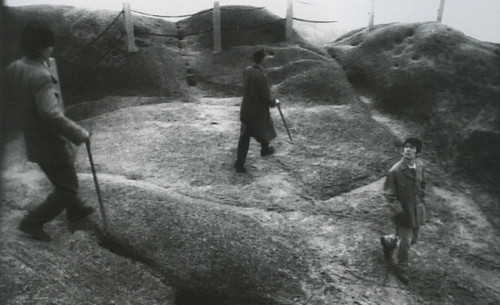
Yang Fudong
Seven Intellectuals in Bamboo Forest, Part 1
2003
Pellicola da 35mm, bianco e nero / 35mm film, black and white
Durata / Duration 29’
Courtesy of the author
A second series of work that quickened my pace from room to room is the film series by young Chinese film artist, Yang Fudong, entitled 'Seven Intellectuals in Bamboo Forest' (2003 - 07). The film is based on the history of seven talented intellectuals - poets and artists - in the Chinese ancient Wei and Jin Dynasty. Open and unruly, they used to gather and drink in the bamboo forest, singing songs and playing traditional Chinese musical instruments in the hope to escape from the earthly life. They pursued individuality, freedom and liberty. Their remarkable talent and passion made them a notable group in Chinese history. Hauntingly re-interpreted, there are seven films in total, each shot on 35mm black and white film. The detail and choreography therein is exquisite and I was only disappointed to discover that the final two were closed upon my arrival (being dispersed in separate video chambers throughout the exhibition).
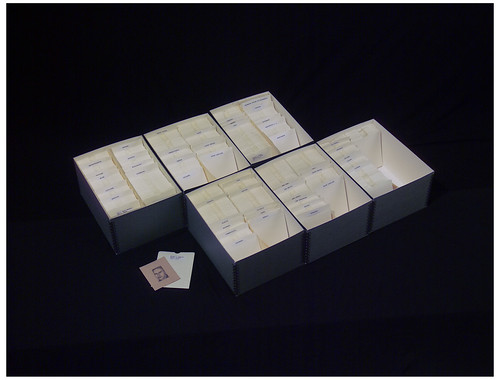
Emily Prince
American Servicemen and Women Who Have Died in Iraq and Afghanistan (But Not Including the Wounded, Nor the Iraqis nor the Afghanis)
2004 fino ad oggi / to the present
Matita su pergamena colorata / Pencil on color coated vellum
Progetto composto da circa 3,800 disegni da aggiungere giornalmente / Project comprised of approximately 3,800 drawings to be added to daily
Ogni Immagine / Each image: 4 x 3 in. / 10.2 x 7.6 cm.
In totale / Overall: 300 x 540 in. / 762 x 1371.6 cm.
© Emily Prince
Courtesy of the artist and Kent Gallery, New York
Emily Prince's 'American servicemen and women who have died in Iraq and Afghanistan (but not including the wounded, nor Iraqis, nor the Afghans)' (2004) was evocative and effective in bringing home to the viewer the number of US casualties. The installation piece contains 10x8cm cards containing delicate pen and ink drawings. What is evocative and moving is that each card contains a portrait of the serviceman or woman killed and a sentence that describes a part of them - that makes them human and familiar: ' He was a good footballer'; 'Father to a two-year-old daughter', etc. Opposite the piece, that takes up an entire wall, was a glass vitrine that I longed to penetrate, in which an index box contains the names of every person, I presume, who was on the wall. Those done by Prince create a brief catalogue of their life as well as of their death.
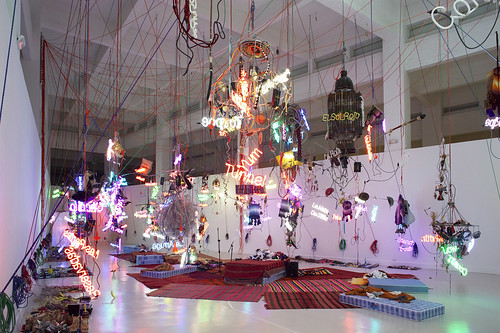
Jason Rhoades
Tijuantanjierchandelier
2006
Installazione / Installation views
CAC Malaga
Courtesy: David Zwirner Gallery
Jason Rhoades 'Tijuanatanjiechandelier' (2006) was a veritable feast for the eyes and one's imagination. A room is dedicated to a host of paraphernalia lining the floor and suspended in dread-locked clusters from the ceiling. Beds with colourful rugs encouraged those brave enough to take in such a hodge-podge of material to lie down and stare up and around at the installation. Neon-lit words, feathers, bowls, masks, lamps, plastic dolls, hats, a dog jacket, shells, etc. fight for definition. The effect is loud and encourages exploration.
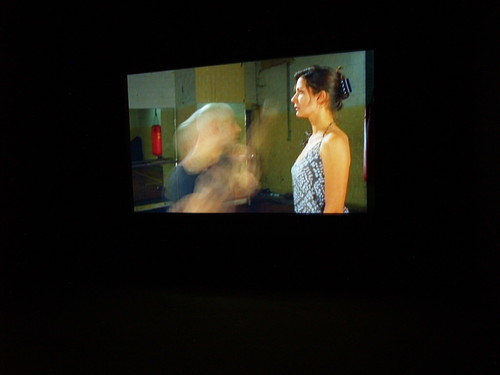
Sophie Whettnall
Shadow Boxing
Proiezione video / video projection
3min, 16mm on dvd
2004
Photo of video projection by Peter Duhon
Sophie Wettnall's 'Shadow Boxing' (2004) stood out. An interesting intestinal-squirming video piece shows a bald-headed man air boxing either side, and within inches of, a stationary, unmoving female figure who wears a fitted patterned dress. At one stage I decided that the two figures must be superimposed but then I began to notice how the female figure's hair is swotted by the fist rushing through the air around her head. She almost looks bored.
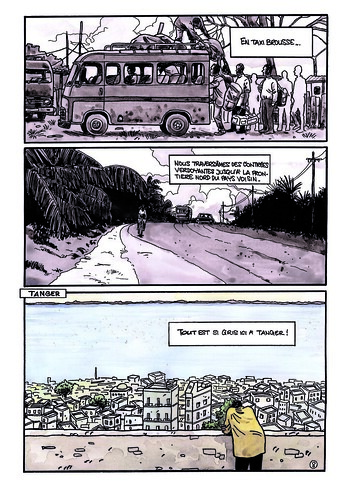
Faustin Titi e Eyoum Ngangué
Une éternité à Tanger(detail)
2003.
46 tavole a colori in formato A3 / 46 Coulored Tables in A3 size.
Acquerelli e pennarello su carta /Watercolour and felt-tip pen on paper.
Courtesy: Africa e Mediterraneo
Eyoum Ngangué and Faustin Titi's 'Une éternitè à Tangers (2003). This is a harrowing cartoon style strip dealing directly with the difficulties and dangers facing the emigrants from Africa who attempt to enter Europe where they imagine and dream a better life awaits them. We read frequently (until it fell from front page news) here in the UK that the Canary Islands have become a favoured destination for African emigrants seeking to make it to Europe to look for work. Illegal immigrants from sub-Saharan Africa have increasingly chosen a sea route to the Canary Islands over the last two years, especially since Madrid tightened security around two Spanish enclaves in North Africa that were being used as a bridge into Europe. In 2006, 30,259 illegal immigrants arrived in the Canary Islands by sea, according to Spanish government figures.
Another Misspent Portrait of Etienne de Silhouette
2004
Poster
85 x 60 cm
Courtesy of the Artist
Christian Capurro et al 'Another Misspent Portrait of Etienne de Silhouette' (1999 - 2007) is an interesting piece. Created with the help of 260 people from all walks of life, each was asked to completely and anonymously erase with a rubber one page of an approximately 246-page Vogue Hommes (September 1986, #92) magazine, with Sylvester Stallone on the cover. They were each asked to write in pencil on the page the time it took them to erase the page (the shortest time being 9 minutes while the longest was beyond 3.5 hours) and whatever monetary value translated into an hourly rate they currently received for their time. As a result, each page has a nominal 'value' based on the sum of these indices. The dollar value accrued 'on' each page ranges from nothing, in a number of instances (some contributors were receiving no calculable money for their time), to one page 'worth' over USD$1,000. Taken together the accumulated monetary value of all these peoples' pages proposes a value, of sorts, for the work as a whole. The finished 'work' (the erased copy of Vogue Hommes was presented within a glass vitrine, soft and white, like a Claus Oldenburg version of a magazine.
Discussion (Property) 2007
Detail of “5,56 x 45 mm AR–M9 with UBGL-M6” from 12 life-size drawings of recently manufactured Bulgarian assault rifles,
executed by Mihaela Vlaseva and Svetozara Alexandrova, charcoal and white chalk on paper
76 x 112 cm ciascuno / each
Photo by Angel Tzvetanov
Courtesy the artist, Galerie Arndt & Partner, Berlin/Zurich and Galleria Continua, San Gimignano/Beijing. © Nedko Solakov.
Of note also was Nedko Solakov's 'Discussion (Property)' (2007), Malick Sidibé 'L'Afrique chante contre le SIDA (Portraits)' (2005).
The Africa Pavilion, 'Check List Luanda Pop', was an interesting exhibition of work from some artists originating from Africa - and this is my biggest criticism of it: there were pieces therein by Jean-Michel Basquiat and Andy Warhol as well. Could the wall space not better have been used for artists working out of Africa who have no means by which to get the international exposure such an event as the Venice Biennale gives? Haven't Basquiat and Warhol exhausted our sensibilities? I had envisaged the essence behind the Africa Pavilion would be to act as a mouthpiece for the artwork originating from Africa by those whose voices are too weak to be heard being drowned out by the international art market and art institutions. Why always the Big Names? Here was a unique opportunity and yet again the work of Yinka Shonibare is there - yes, tick. Kendell Greers? Yes, tick. Whilst obviously these two artists' work is essential for summing up the struggle of African art to achieve international recognition and to be housed at the Venice Biennale and in the Arsenale no less, but, a foothold is a foothold and once a grip has been found perhaps complete originality should come rushing forth rather than the predictable?

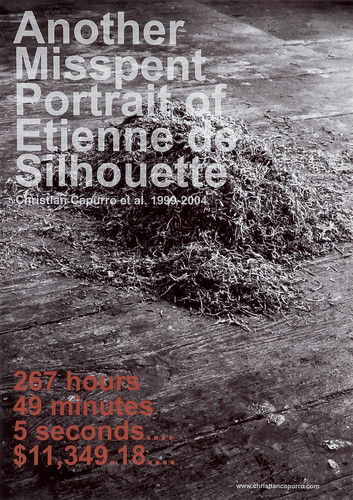
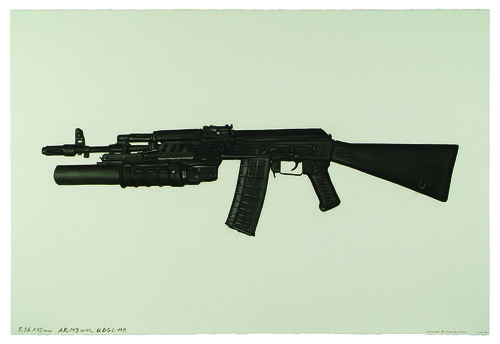
Comments